Question
Who among the following likes black
color? Answer the given questions based on the information given below. Sixteen persons are sitting around the two square tables. One square table is inscribed in another. Two persons sit on each side of the table. The persons on the inner table have different number of balls while the persons on outer table like different colours. J, K, L, M, N, O, P and Q sit on one table while A, B, C, D, E, F, G and H sit on another table. Each of the persons on both tables is facing the closest person opposite to them on different tables such that the persons on inner table are facing outwards while persons on outer table are facing inwards. Persons on inner table have different number of balls from 1 to 8. Also, persons on outer table like different colours among, red, black, pink, yellow, white, grey, blue and green. Note: If A is facing B then both are sitting opposite to each other on the different tables but on the nearest seat. J sits opposite to one, who sits to the immediate left of L, who has 3 balls. Both J and L are sitting on the opposite sides of the same table. The persons facing L is three places away from D. Q has twice number of balls of M, who has 3 balls more than K. K faces E, who likes yellow color. O sits to the immediate right of P, who has 7 balls, on the same side. A, who likes white color, faces O, who has 6 balls. E does not sit adjacent to A or C and K is not adjacent to L. C, who likes green color, sits second to the right of A. G sits to the immediate right of F, who likes red color and both sit on the same side. P has 2 more balls than N, who does not face G. The one, who has 4 balls, faces B, who likes Pink. M is not adjacent to J, who is not to the immediate right of N. G does not like Grey or Blue color.Solution
J sits opposite to one, who sits immediate left of L, who has 3 balls. Also, both sit on same table. The persons facing L is three places away from D. Q has twice number of balls than that of M, who has 3 balls than K. So, K, M and Q have 1, 4 and 8 balls respectively. K faces E, who likes yellow color. O sits immediate right of P, who has 7 balls, on the same side. A, who likes white color, faces O, who has 6 balls. C, who likes green color, sits second to the right of A. G sits to the immediate right of F, who likes red color and both sit on the same side. So, we have four cases, Case-1a 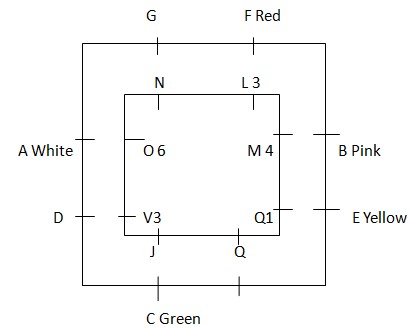 Case-1b
Case-1b 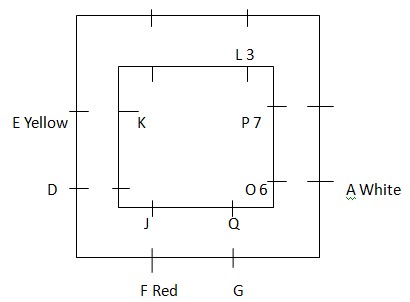 Case-2a
Case-2a 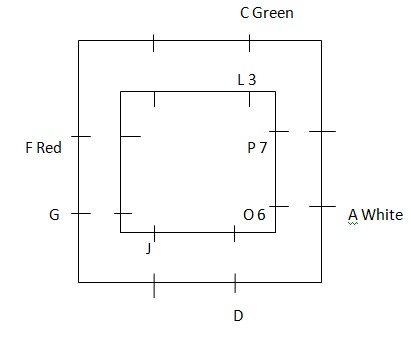 Case-2b
Case-2b 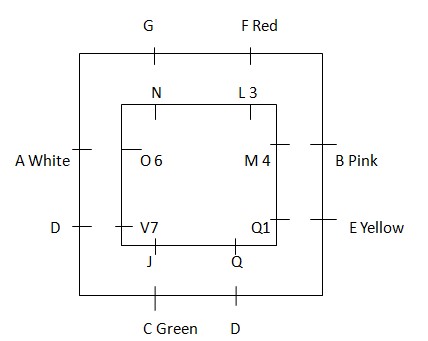 E does not sit adjacent to A or C and K is not adjacent to L. So, case 2(a) is rejected. P has 2 more balls than N, who does not face G. So, case 1(a) and 2(b) are rejected. The one, who has 4 balls, faces B, who likes Pink. M is not adjacent to J, who is not immediate right of N. G does not like Grey or Blue color. So, we have, Case-1b
E does not sit adjacent to A or C and K is not adjacent to L. So, case 2(a) is rejected. P has 2 more balls than N, who does not face G. So, case 1(a) and 2(b) are rejected. The one, who has 4 balls, faces B, who likes Pink. M is not adjacent to J, who is not immediate right of N. G does not like Grey or Blue color. So, we have, Case-1b 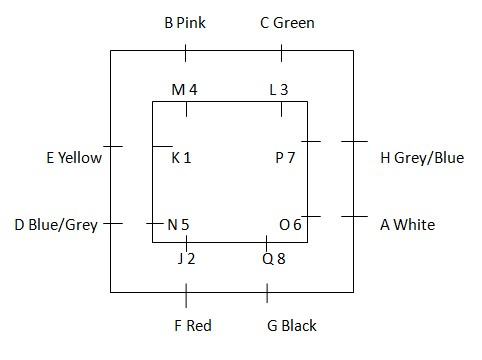
The Advertisement of a Prospectus of a company shall specify therein the _____________
“A legal mechanism used to resolve disputes through the aid of a neutral third party given the authority of making a legally binding decision.” Is: ...
In Islamic divorce law, what is the process of khula?
In which of the following cases can courts intervene in an arbitral proceeding?
Which section of the Companies Act lays down provisions relating to document containing offer of securities for sale to be deemed prospectus?
OASIS with reference to PFRDA Act stands for_____________
An act done by a person bound by law or by mistake of fact believing himself bound by law is:
In the absence of any provision by contract between the partners for the duration or determination of their partnership, what type of partnership is it?
A relevant confession becomes irrelevant when
As laid down under the Insurance Act the duration of the Executive Committee of the Life Insurance Council or the General Insurance Council is _________...


